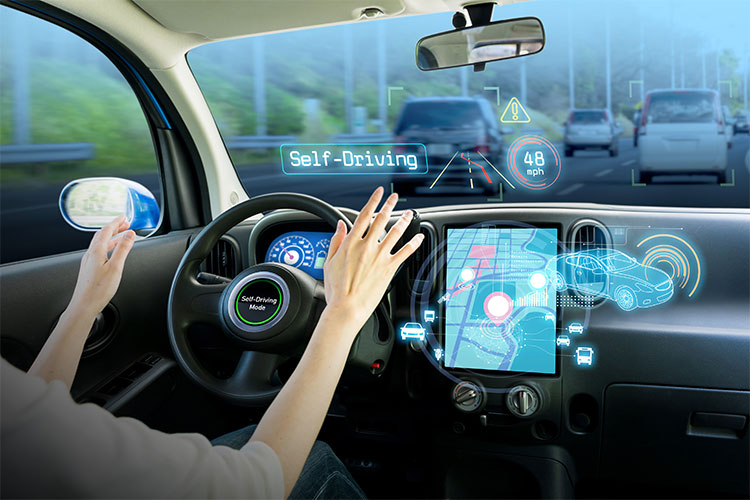
Posted on
Lasers are used in a wide variety of everyday applications, in everything from fiber optic telecommunications, to computer mice, to cell phones, and even cars. This is made possible by semiconductor lasers, particularly by vertical-cavity surface-emitting lasers (VCSELs). A VCSEL is created from a complex multilayer structure that is formed by depositing thin film layers onto a substrate. The layers are composed of an active layer that produces the photons between two distributed Bragg reflectors (DBRs) that reflect the light back and forth through the active area multiple times to enhance amplification. Each DBR is made up of multiple “mirror pairs” of epitaxial layers. The refractive index and thickness of each epilayer can be tailored to induce constructive interference of the desired wavelength of light. An aperture can be created to confine the current into a small area of the active layer. This concentration of current flow controls the beam width and lowers the threshold current to produce laser emission.
VCSELs have several properties that make them useful for modern technology:
- Temperature Stability
- Low Power Consumption
- Low Beam Divergence
- Large Capacity Data Transfer
In this article, we’ll discuss how these properties make them ideal for modern applications, including optical communication, sensors, small consumer electronics, and vehicles.
Optical Communications

VCSEL technology is used in the communications sector as light sources for optical fiber communication. The unique design of VCSELs allows for efficient coupling of light into optical fibers for high-speed data transmission. Compared with conventional communications using metal cables, communication using optical fibers can transmit data over longer distances and in greater volumes. With the growth of data centers, increase in data-base communications, fiber to the home, and the proliferation of cloud-based technology, the volume of data communications has grown at an increasing rate. VCSELs are optimal for optical communications due to their compact size, economical cost, high modulation bandwidth, and low power consumption.
Sensors
VCSELs are used in many different types of sensors, including those for proximity detection, distance measurement, light detection, and biomedical sensing. They offer many advantages over traditional sensors, including lower power consumption, higher sensitivity, and smaller size.
A VCSEL sensor with an integrated photodiode can emit light and also detect light reflected back with its large “active region” – the area where the light is absorbed. When organized in VCSEL arrays, sensors can be used for biomedical sensor applications ranging from reading blood oxygen levels to magnetoencephalography (MEG), a non-invasive method to measure the brain’s electrical currents.
Small Consumer Electronics

Modern smartphones utilize VCSELs for a number of functions. Facial recognition and 3D sensing in smartphones is made possible with a VCSEL flood illuminator, dot projector, and proximity sensor. As consumers demand longer battery life and smaller sizes for their smart devices, VCSELs are key enablers for their low power requirement, high optical output, compact size, and very narrow linewidth. VCSELs are widely used in computer peripherals such as optical mice, printers, and scanners. The coherent light emission from a VCSEL enables precise tracking, their
ability to emit light at specific wavelengths enables printing crisp text and detailed images, and they provide accurate and consistent scanning results.
Vehicles

In vehicle monitoring applications, VCSELs have several advantages over LEDs, including narrow output spectrum, low spectral temperature coefficient, and high modulation capability. One of the benefits of VCSELs in automotive applications is their immunity to sunlight. LED-based tracking devices operate over a wide spectrum, so they are sensitive to interference from ambient light such as sunlight, streetlights, and headlights. VCSELs can utilize a narrower spectral filter because they operate in a narrower spectrum. This leads to improved signal-to-noise ratio, sensitivity, and resilience to the environmental conditions of driving. VCSELs are used in LiDAR (Light Detection and Ranging) systems that enable autonomous vehicles and environmental mapping. VCSELs offer higher resolution, improved range, and faster response times, allowing autonomous vehicles to navigate complex environments safely and efficiently.
To keep up with the demand for VCSELs, manufacturers need thin film deposition systems that can flawlessly deposit the multiple anti-reflective and high-reflective layers. Denton Vacuum’s Infinity BTS system meets these demands and supports high throughput with high uptime while providing the highest quality, lowest defect-density optical coatings.